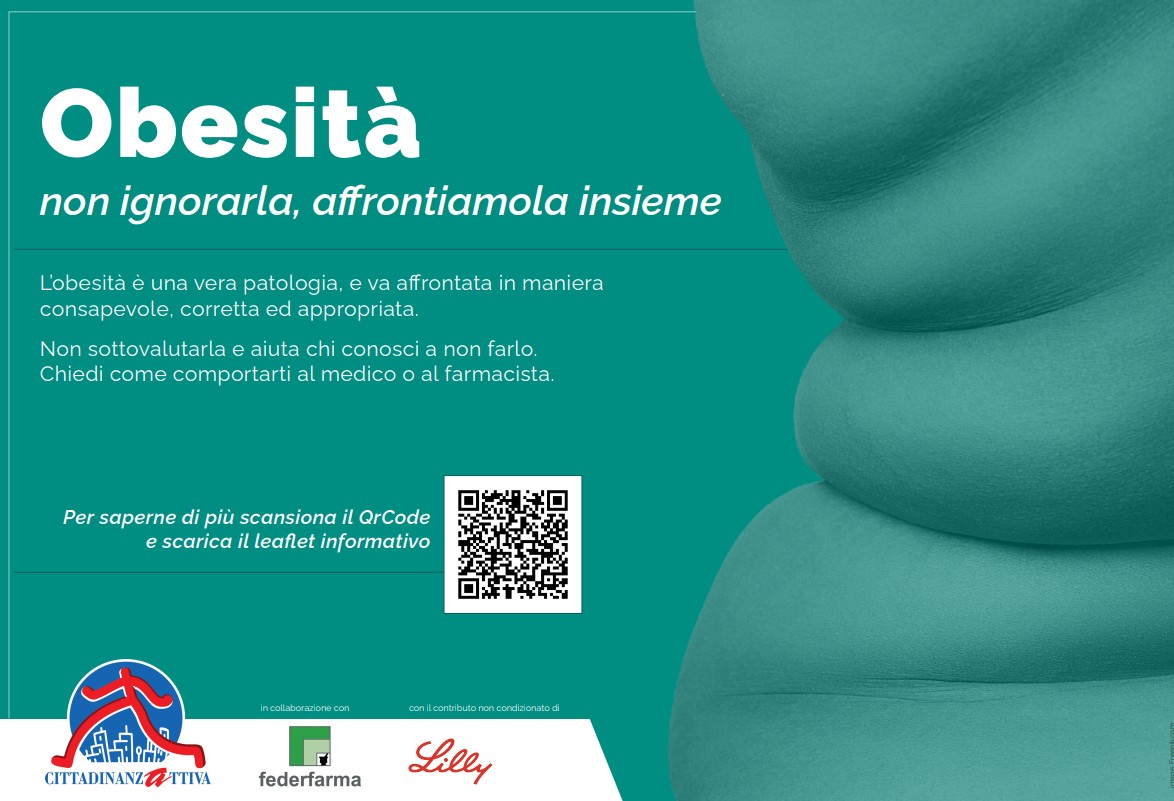MILANO (ITALPRESS) – Daiichi Sankyo Italy has announced the availability in Italy of quizartinib for the treatment of adult patients with acute myeloid leukemia (LMA) FLT3-ITD positive (mutation of the FLT3 gene with internal tandem duplication) of new diagnosis, in association with standard citarabin chemotherapy and standard citarabin consolidation base and chemotherapy The repayment of quizartinib, the first drug launched in Italy by Daiichi Sankyo in hematology, was approved following the publication in the Official Journal of the Italian Republic on 24 October. Acute myeloid leukemia is an aggressive form of blood tumor and bone marrow characterized by the rapid proliferation of anomalous myeloid cells. In 2022 more than 480.000 new cases of leukemia have been reported around the world, with over 300,000 deaths. Acute myeloid leukemia (LMA) represents 23.1% of the total cases of leukemia in the world and is the most common form of leukemia in adults. LMA has an incidence of approximately 3-4 cases for 100,000 people per year: 2,000 new cases are recorded each year in Italy. However, the risk of developing the disease varies with age, and in most cases it occurs at an early age, with an average age at the diagnosis of 68 years. In patients eligible for high-dose chemotherapy, ESMO 2020 guidelines provide a three-phase treatment: induction, consolidation, maintenance. The induction phase aims to minimize leukemic cells and achieve complete remission. This phase follows the consolidation, whose aim is to reduce the risk of relapse. Some of these patients may be offered an allogenic transplant of hematopoietic stem cells. Others may be subjected to maintenance therapy. The initial treatment of induction and subsequent consolidation and maintenance therapy are chosen according to the patient’s age, its general health and the cytogenetic/molecular risk. ‘In 40-50% of cases, although patients respond to first-line treatment, a recurrence occurs – he explained during a media briefing in Milan Roberto Cairoli, Director of the Complex Structure of Hematology at the Hospital Niguarda Cà Granda in Milan and Associate Professor of Emathology at the University of Milan-Bicocca. In recent years we have taken important steps in the management and knowledge of this disease. In particular, the possibility of identifying its genetic and molecular characteristics has allowed the development of targeted therapies. Numerous genetic mutations have been identified in acute myeloid leukemia (LMA) and FLT3 mutations (Tyrosine kinase 3 type FMS) are among the most common. Approximately 80% of FLT3 mutations are FLT3- ITD mutations (internal tandem doplication), which promote neoplastic growth and contribute to a particularly unfavorable prognosis, including an increase in risk of relapse, a low percentage of response to rescue therapy and a shorter survival expectation than LMA patients without mutation. The FLT3-ITD mutations are present in about 25-30% of all LMA cases. Thanks to the approval of quizartinib a further targeted treatment is now available on the molecular target that has shown to significantly improve global survival in LMA. ‘Quizartinib is an oral inhibitor of the FLT3 receptor tyrosine-kinase acting selectively on the FLT3-ITD mutations and has been developed specifically for patients with acute myeloid leukemia (LMA) FLT3-ITD positive. This is a FLT3 type II inhibitor approved in Europe and the United States for these newly diagnosed high-dose chemotherapy patients – said Adriano Venditti, Director of Onco-Emathology and Professor of Emathology at Tor Vergata University of Rome –. A valuable drug to treat this aggressive pathology from the first line so as to reduce the risk, consistent, of relapse of the disease: quizartinib has in fact proved to reduce the mortality rate and to double global survival medianà. Acute myeloid leukemia is linked to the uncontrolled multiplication of blasts (myeloid derivative cancer cells) that invade the bone marrow, which is no longer able to function properly and, in particular, to ensure the production of normal blood cells. This medullular insufficiency leads to anemia (affaction, pallor, difficulty breathing and tachycardia), a predisposition to infections, even severe, due to the decrease of neutrophil granulocytes. Finally, the decrease in the number of platelets (trombocytopenia) can cause bleeding, especially at the level of the skin and mucous membranes. ‘The patient with LMA is often elderly and therefore fragile by definition. The disease debilitates it further causing a decrease in its quality of life, a condition that shares with many other hematological patients – said Davide Petruzzelli, President of the Association Pazienti La Lamp of Aladino ETS -. It is essential to ensure global assistance to these patients, including psychological, nutritional support and effective follow-up management. It is also necessary to reduce inequalities in access to care and promote a synergy between hospital and territory, passing from a performance logic to a carrigue. The benefits of quizartinib are based on the results of the QuANTUM-First study, published in the prestigious The Lancet magazine in May 2023. In this randomized, double-blind, placebo-controlled phase 3 study, conducted on 539 patients, quizartinib was evaluated in combination with standard induction and consolidation chemotherapy, including hemopoietic stem cell transplantation (HSCT), and maintenance monotherapy for up to 36 cycles, in adult patients aged 18 to 75 years with LMA of new positive mutation diagnosis. ‘We are proud to bring quizartinib to Italian patients, the first hematological treatment developed by Daiichi Sankyo. With this approval, the company now has two approved and reimbursed drugs in Italy oncology: a drug-conjugated antibody (ADC) and quizartinib, marking an important milestone in our mission of innovation. With the approval of quizartinib patients with acute myeloid leukemia with FLT3-ITD mutation can access a targeted therapy developed and approved specifically for this malact subpopulation, said Gilda Ascione, Medical Director, Head of Oncology Medical Affairs of Daiichi Sankyo Italia. ‘Daiichi Sankyo has always been deeply committed to listening and understanding unsatisfied clinical needs, with the aim of developing innovative therapeutic solutions that can make a difference in patient life. But our responsibility goes beyond the drug: we want to contribute concretely to improving the quality of life of people, accompanying them along the whole path of care. For this reason, we work in synergy with institutions, clinics and associations, also promoting a culture of prevention and health. In three words: innovation, patient care and partnership,” concluded Mauro Vitali, Head of Oncology Business Division at Daiichi Sankyo Italia. Quizartinib is a FLT3 thyrosin-chinasic receptor inhibitor. Quizartinib and its main metabolite AC886 bind competitively to the bond pocket for the adenosine triphosphate (ATP) of FLT3 with high affinity. Quizartinib and AC886 inhibit the activity of the FLT3 kinase, preventing the autophosphorylation of the receptor, thus inhibiting the further downstream signaling of the FLT3 receptor and blocking the cellular proliferation dependent on FLT3-ITD. Global median survival was 31.9 months for patients treated with quizartinib (n = 268; IC confidence range to 95%: 21,0- not estimable NE) compared to 15.1 months for patients of the control group (n = 271; IC to 95%: 13,2-26,2) after a median follow-up of 39.2 months. The primary endpoint of the study is global survival. Secondary endpoints include free survival from events, full remission rates (CR) and complete remission (CRC) after induction, and the percentage of patients reaching CR or CRC with residual disease negativity measurable to the FLT3-ITD test. Safety and pharmacokinetic endpoints were also evaluated, as well as exploratory efficacy and biomarkers, including the duration of the CR. A complete remission is defined by the absence of blasts in the bone marrow and the complete recovery of peripheral blood cells (white, red and platelet cells). The ongoing clinical development program of quizartinib includes a Phase 1/2 study in pediatric and young adults with LMA relapse/positive refractory for FLT3-ITD in Europe and North America, as well as several Phase 1/2 studies in combination with additional therapies, as part of a strategic collaboration with the MMD Anderson Cancer Center of the University of Texas in the United States. Finally, in November 2024, the Phase 3 QuANTUM-WILD (Quantum Wild Type Quizartinib or Placebo plus Chemotherapy in New Diagnosis Patients with negative LMA for FLT3-ITD) was launched. The study includes the enrollment of approximately 700 patients in different locations in Asia, Europe, North America, Oceania and South America. The aim of the study is to compare the effect of quizartinib compared to the placebo on overall survival in patients aged 18 to 70 years with acute myeloid leukemia (LMA) of new diagnosis without FLT3-ITD mutation.
– photo Italpress – (ITALPRESS).






